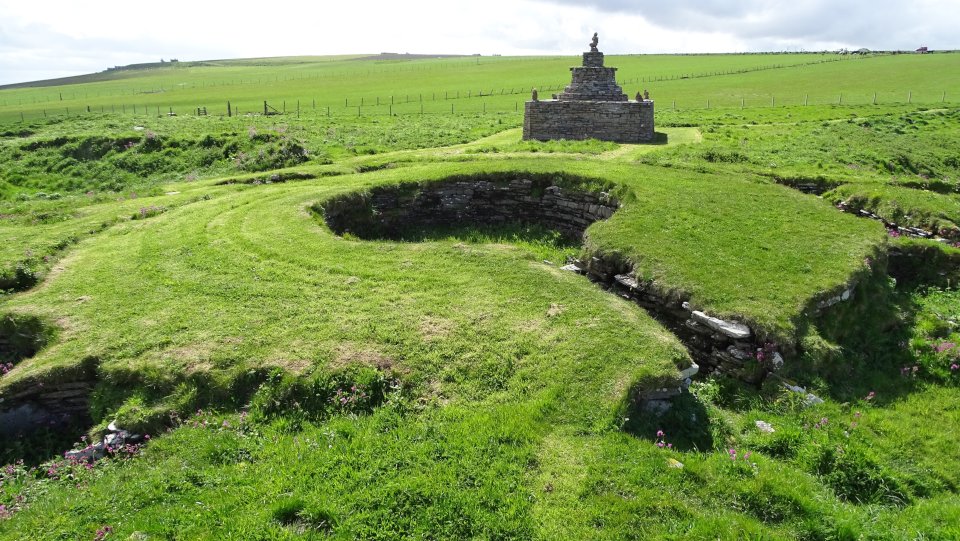
Visited 2nd June 2015

Visited 2nd June 2015

Visited 2nd June 2015

Visited 2nd June 2015

Visited 2nd June 2015

Visited 2nd June 2015

Nybster broch, Caithness.

Internal wall courses at Nybster broch.

Part of the outer ditch surrounding Nybster broch.

Mervyn Tower at Nybster broch, built by John Nicolson to commemorate the work of Sir Francis Tress Barry, who excavated many northern broch sites in the late 19th century.

Looking along the entrance passage into the court of Nybster broch.

Walling courses at Nybster broch.

Walling course detail at Nybster broch.

Looking along the entrance passage from within Nybster broch.

An elevated view featuring the entrance passage at Nybster broch.

This composite of seven photographs shows Nybster Broch, with the entrance passage opposite.

Some of the complex of outbuildings at Nybster broch.

Visited: June 18, 2019
Nybster broch stands on a cliff-girt headland, protected on three sides by vertical sandstone cliffs and by a ditch that cuts off the promontory on its landward side.
The site is signposted just south of the village of Nybster, and there is a car park from which a good footpath heads south for 450 metres to the broch site. As you approach the broch, the first thing you will see is Mervyn’s Tower, a monument built of rough stones by local farmer John Nicholson to commemorate the work of Sir Francis Tress Barry who excavated the site in 1895-6.
Canmore states that Nybster is: ‘a site of major signifcance in the study of the development of the broch in that it comprises the ground-galleried block-house of a pre-broch promontory fort, a solid-based broch, and a post-broch settlement. The block-house, which displays broch-like features, including a passage checked for two doors, is probably to be dated not much before the first century BC if not within it‘.
Without doubt, Nybster is a complex side, and readers wishing to learn more about it can find copious details of the various structures and finds on the Canmore website.
Nybster Broch – reported on BBC News and added site.
Royal Commission Site entry states:
“Nybster Broch was excavated by Sir Francis Tress Barry about 1900, revealing neither guard chamber nor mural cells. It has in internal diameter of 23ft and a wall thickness of 14ft. In 1910 the maximum height of the walls was 5ft 3ins.
The broch is defended by a possibly later forework and the whole is fronted by a ditch about 20ft wide which cuts off the promontory on which the broch stands. To seaward of the broch practically the whole promontory is covered by well-built out-buildings, oblong, circular, and irregular in plan.
Finds include a fragment of 2nd century Samian ware, as well as the more usual bone and stone objects.”











